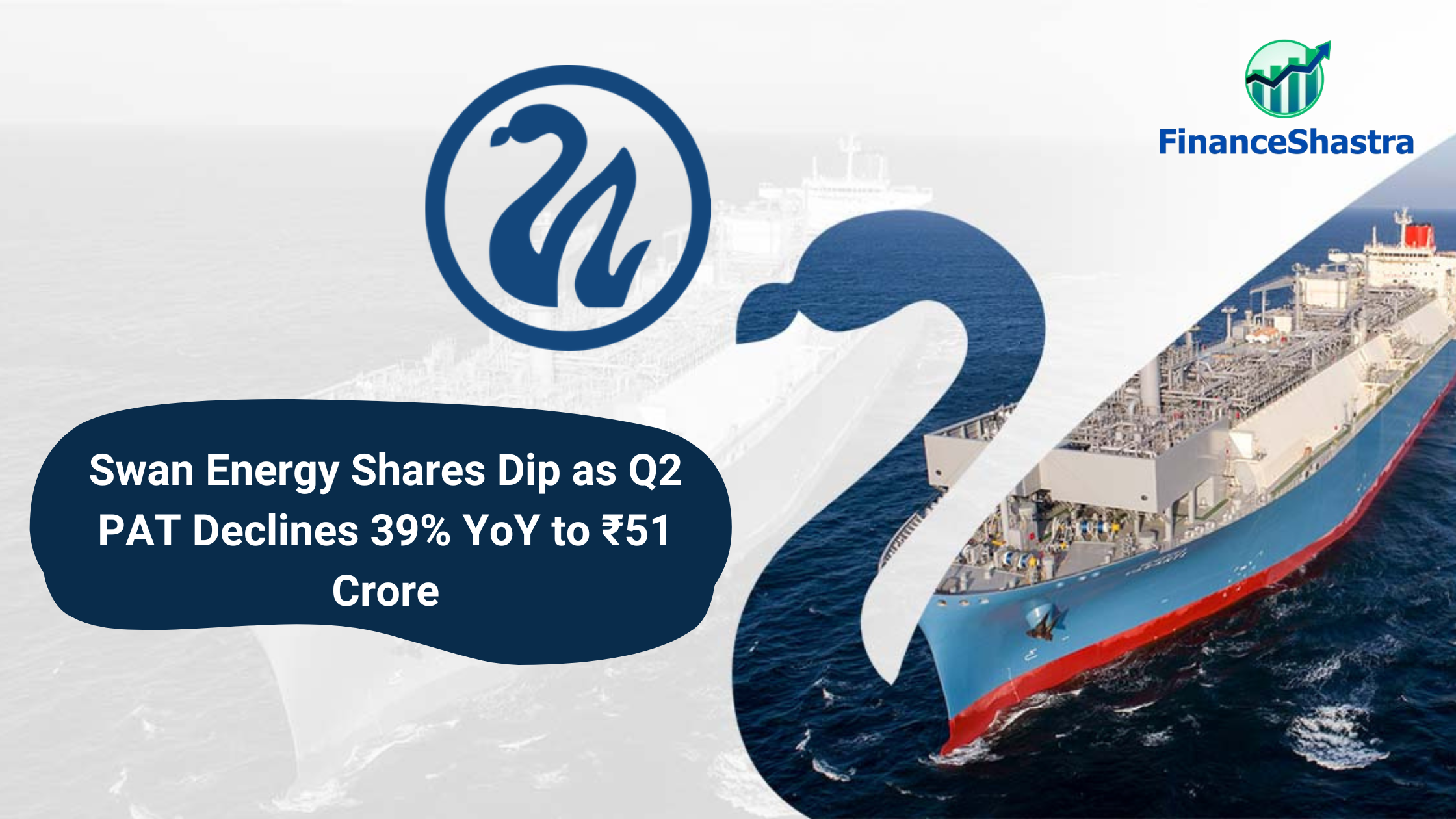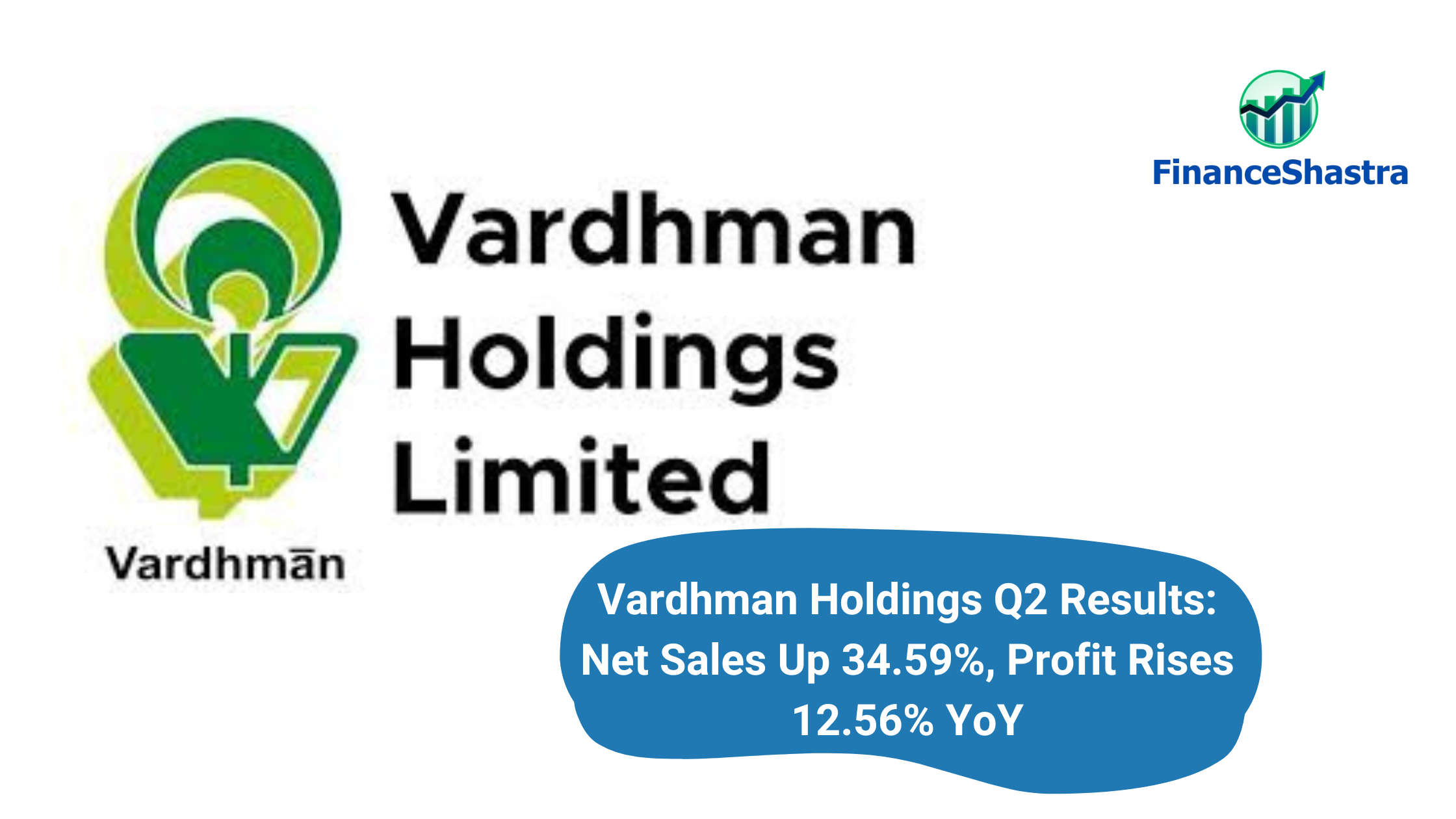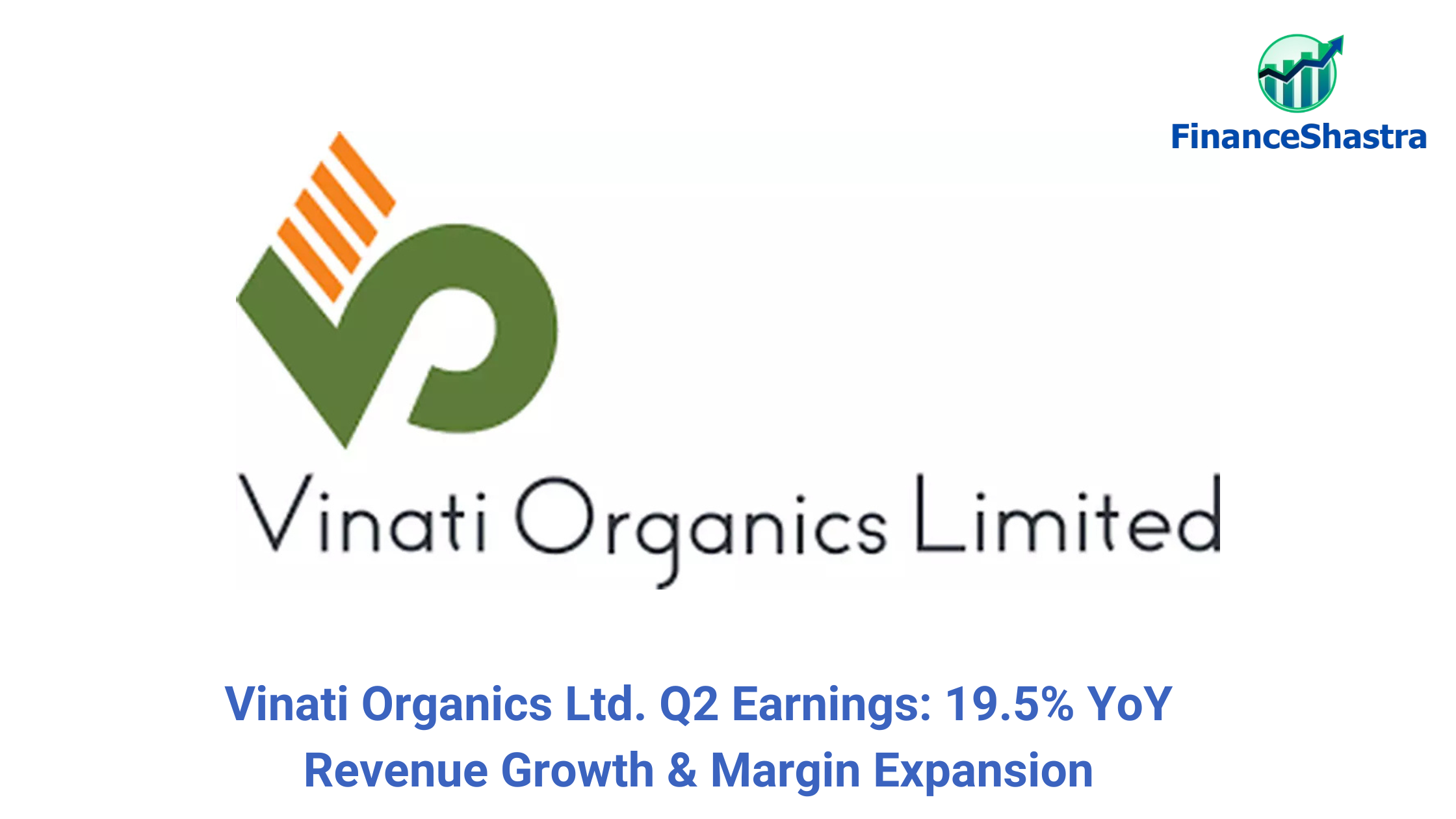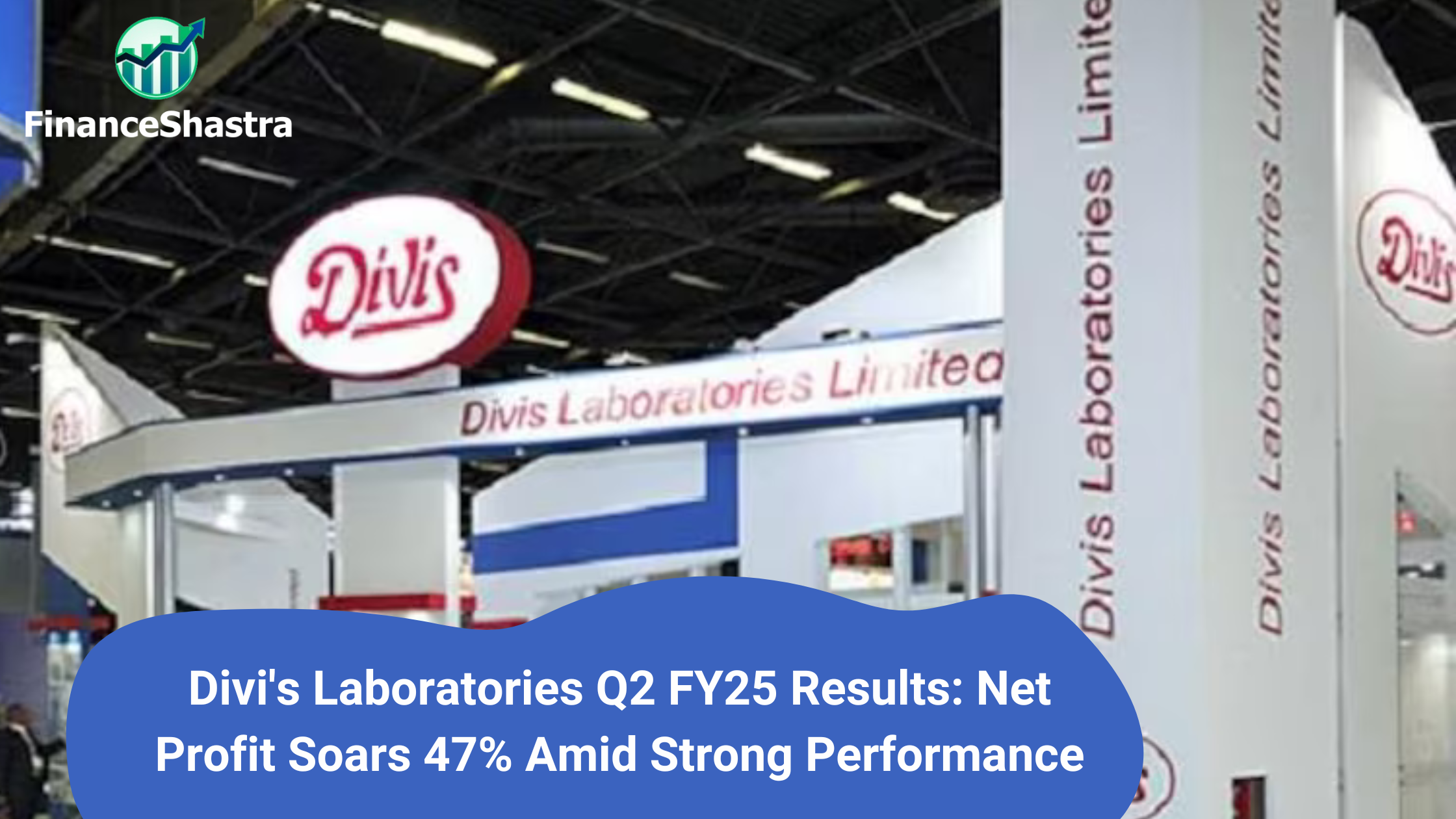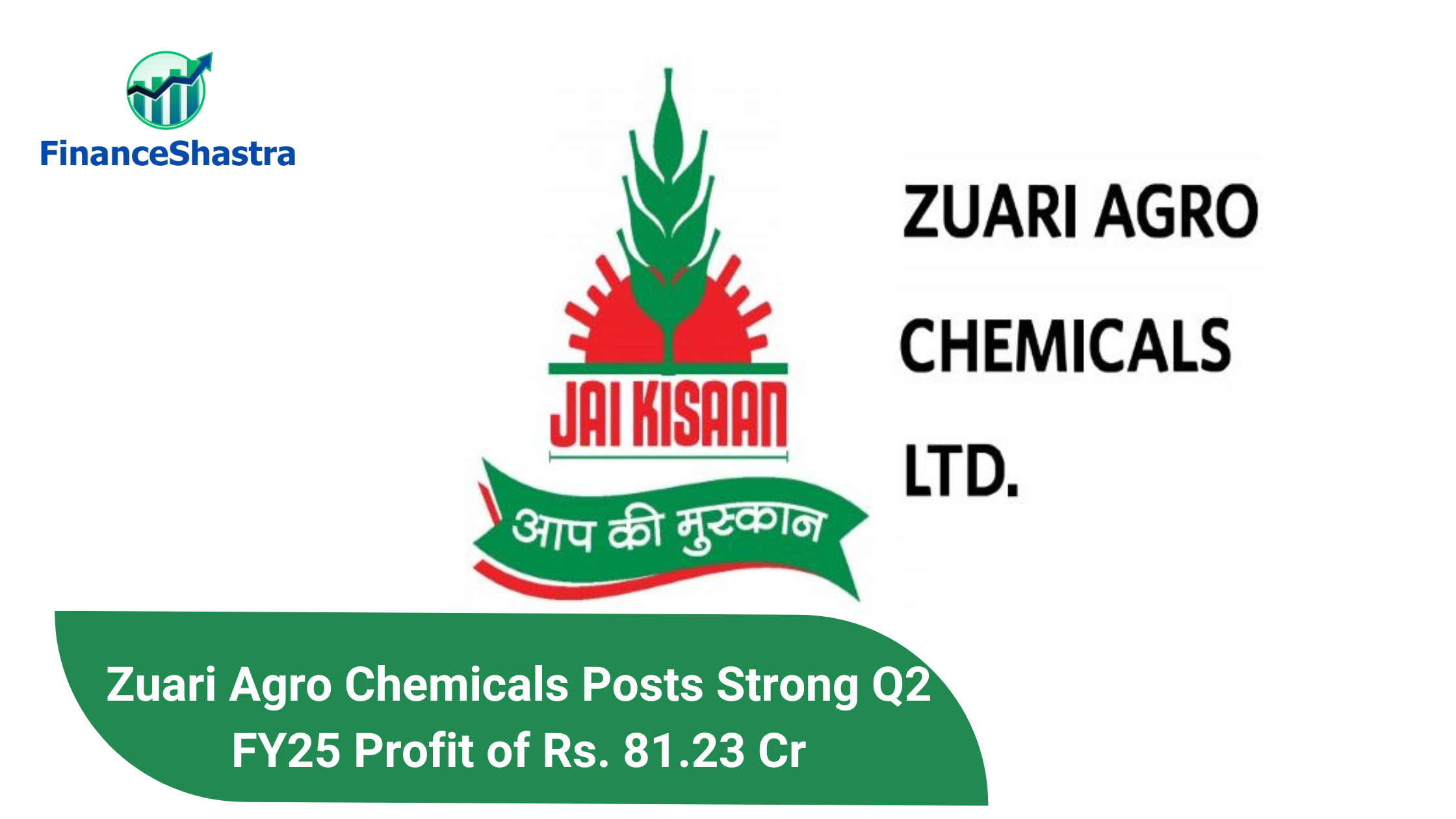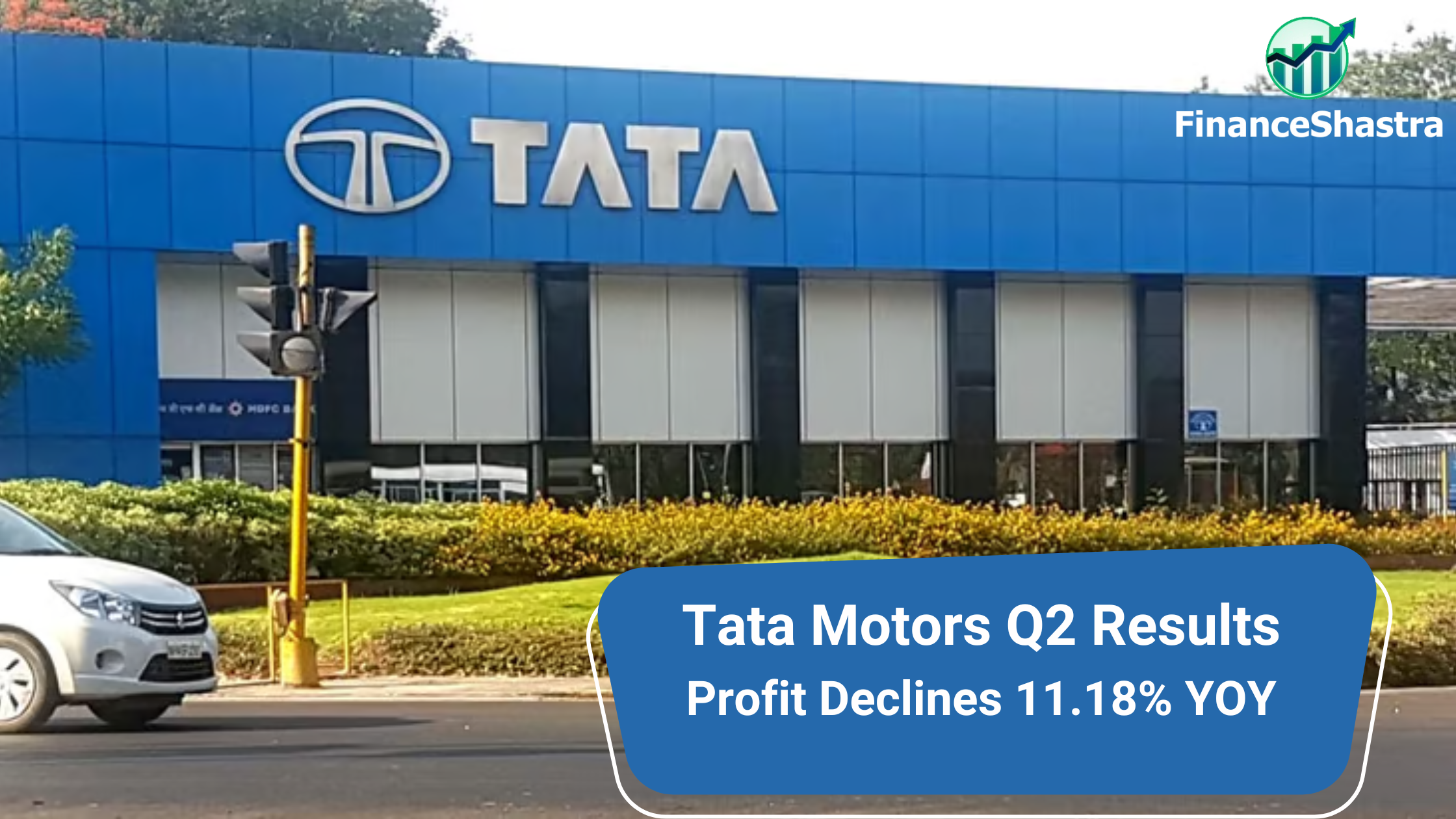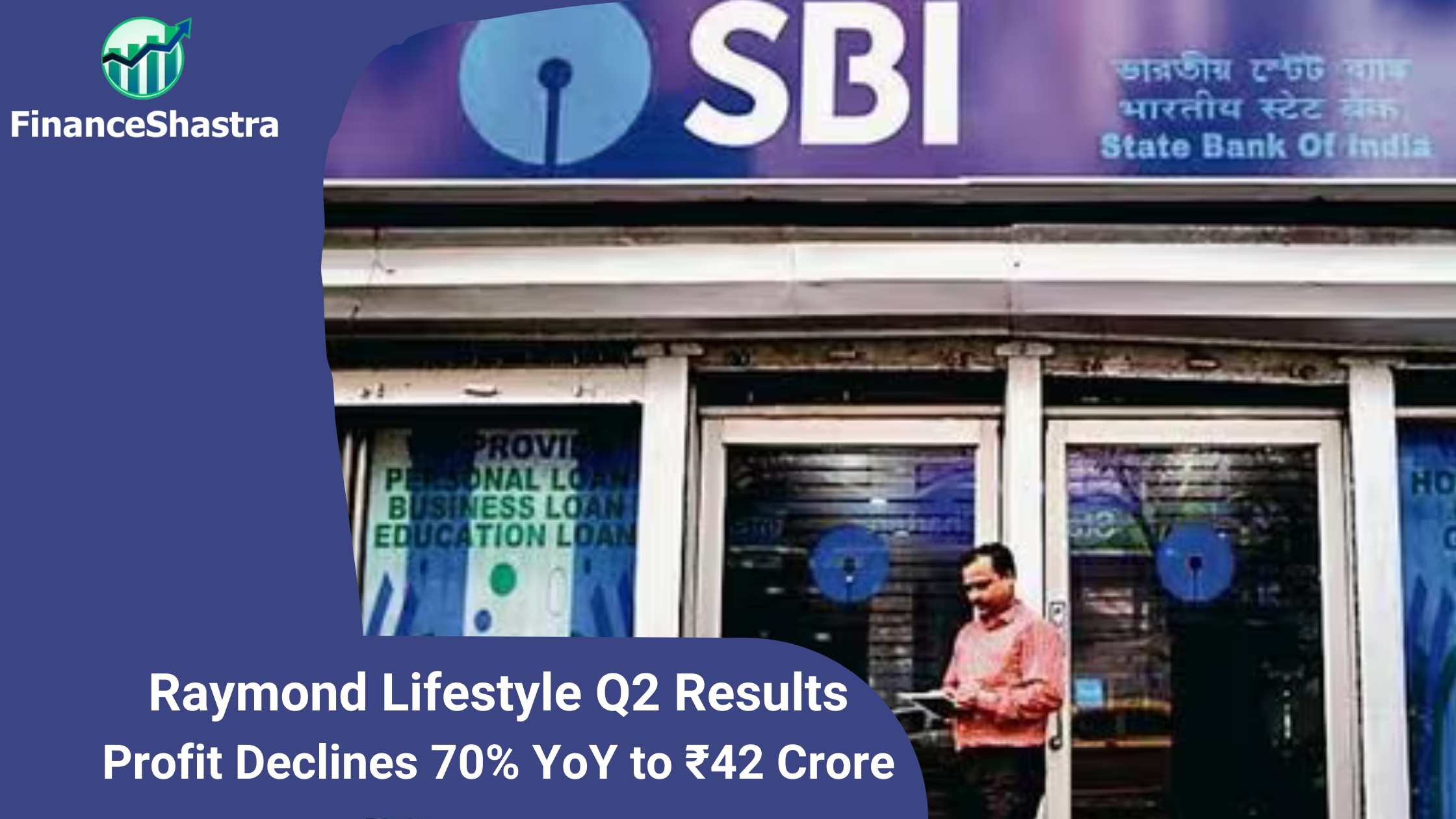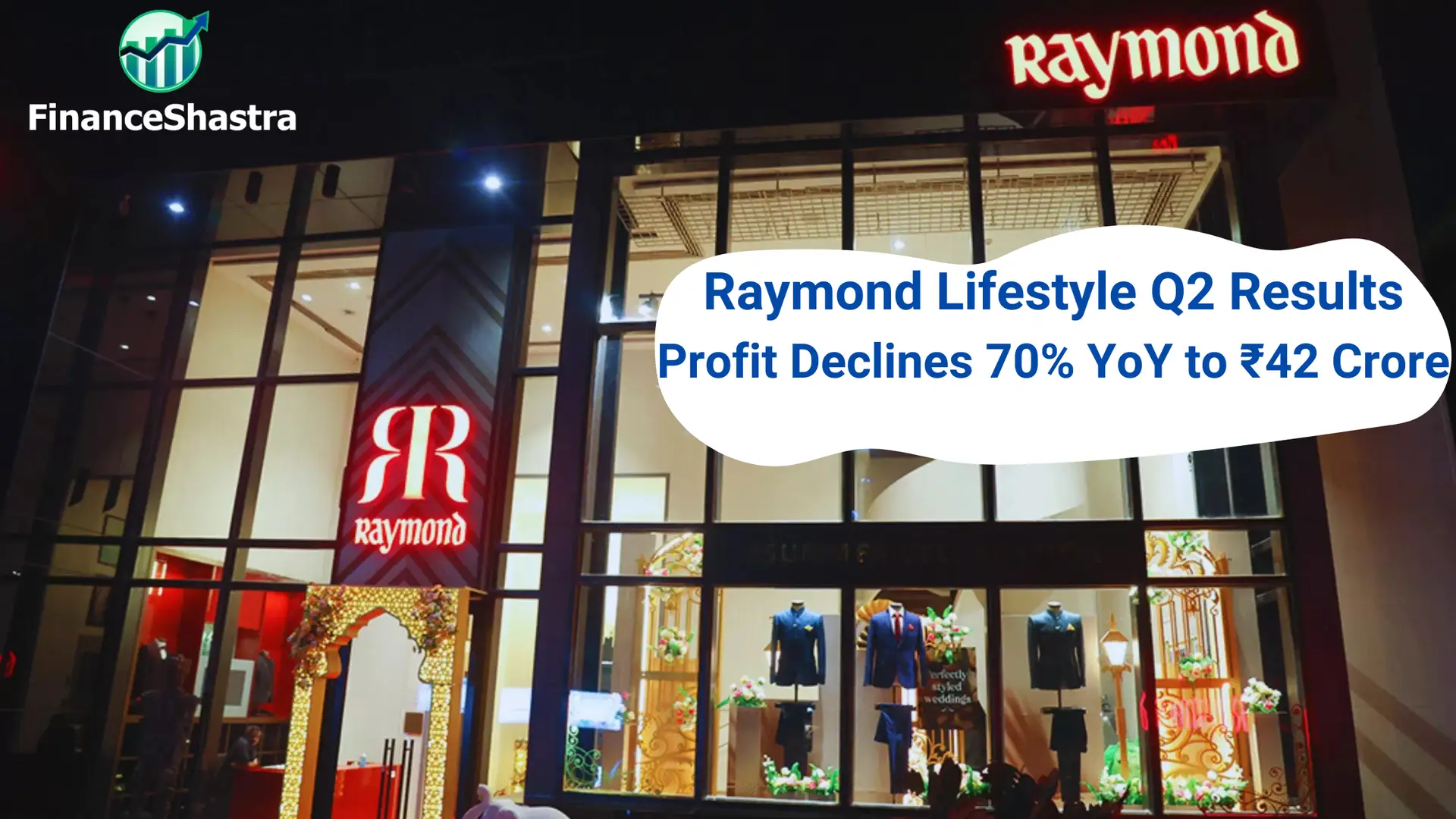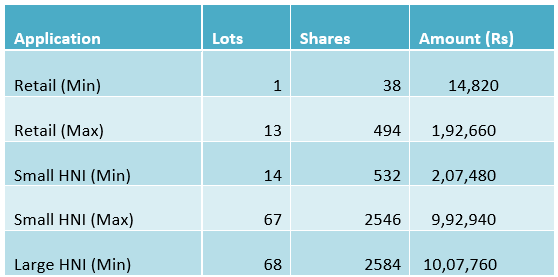Swan Energy Shares Dip as Q2 PAT Declines 39% YoY to ₹51 Crore
Company Overview
Swan Energy Ltd. (SEL), formerly known as Swan Mills Limited, was established on February 22, 1909, and underwent a major transformation in 1992 when it was acquired by the Dave and Merchant families from the J.P. Goenka Group. Today, SEL operates across three core verticals: Textiles, Energy, and Construction & Real Estate, marking its presence in sectors critical to India’s economic growth. During the 1990s, SEL faced financial challenges and was brought under the Board for Industrial and Financial Reconstruction (BIFR). The revival plan focused on reviving its spinning unit, disposing of surplus land for modernization, and resuming operations. By 1993-94, SEL achieved profitability, and in 1995, BIFR declared it financially sound. Initially, its Textile Division relied on job work operations, accounting for 80% of mill processing, and expanded into exports, supplying to Marks & Spencer, a leading European retailer.
In the Energy Sector, SEL made significant advancements with the development of India’s first Greenfield LNG Port Terminal at Jafrabad, Gujarat, through its subsidiaries Swan LNG Private Ltd. (SLPL) and Triumph Offshore Private Ltd. (TOPL). The 10 MMTPA terminal, operational since FY 2021, utilizes the Floating Storage and Regasification Unit (FSRU) ‘Vasant 1’, deployed in 2020. SEL secured long-term agreements with IOC, BPCL, ONGC, and GSPC for terminal utilization and collaborated with Mitsui OSK Lines (MOL) of Japan to enhance LNG operations. Additionally, SEL signed charter hire agreements with companies in Hong Kong and Ghana, showcasing its growing international presence in LNG. In Real Estate, SEL has strategically invested in high-value assets. In FY 2014, it acquired a 0.3 million sq. ft. IT Park in Whitefield, Bangalore, leased to MNCs. It also developed Technoya Park in Hyderabad, leasing 2.92 lakh sq. ft. to Mahataa Information India Pvt. Ltd., generating an annual rent of ₹14 crore, which was utilized to service loans. SEL has also executed significant projects, such as a ₹459 crore LNG terminal infrastructure agreement with Black & Veatch Private Limited in 2018. With a focus on infrastructure development, sustainability, and sectoral diversification, SEL has positioned itself as a key player in India’s growth and development initiatives.
Industry Outlook
Swan Energy operates in three key sectors—Energy (LNG Infrastructure), Textiles, and Real Estate—all of which are poised for significant growth. The LNG infrastructure industry, where Swan Energy is a key player, is projected to grow at a CAGR of 8-10% globally through FY25, driven by the increasing adoption of natural gas as a cleaner fuel and rising investments in Floating Storage and Regasification Units (FSRUs). In India, the LNG sector is expected to expand at a CAGR of 11-13%, supported by the government’s initiatives to enhance natural gas’s share in the energy mix from 6% to 15% by 2030, aligning with its net-zero emission goals. Swan Energy’s Jafrabad Greenfield LNG Terminal positions it to capitalize on this growth, particularly as demand for imported LNG rises due to domestic production shortfalls.
The real estate sector in India is experiencing robust recovery, with a projected CAGR of 8-9% until FY30, fueled by urbanization, increasing demand for commercial spaces, and government initiatives like Smart Cities Mission. Swan Energy’s investments in high-value IT parks and commercial properties, such as Technoya Park in Hyderabad and its Bangalore IT Park, place it in a strong position to benefit from this trend.
In the textile sector, where Swan Energy has historical roots, the Indian textile industry is expected to grow at a CAGR of 10-12% by FY25, driven by rising exports, increased consumer spending, and growing demand for sustainable fabrics. Despite Swan Energy’s reduced focus on textiles, its legacy operations provide stability and diversification.
Overall, with strong tailwinds in the LNG, real estate, and textile sectors, Swan Energy is well-positioned for sustained growth. The company’s investments in infrastructure, clean energy solutions, and high-value real estate assets align with India’s long-term economic and sustainability goals, making it a potential leader in its operating segments.
Business Segments
Swan Energy operates through a diverse range of business segments, each contributing uniquely to its overall revenue and strategic vision.
- The Textile Segment forms the company’s historical foundation, focusing on the processing and manufacturing of fabrics. This segment thrives on job work operations, serving long-standing clients and generating stable revenues. Additionally, it has supported export initiatives, previously catering to high-profile clients like Marks & Spencer.
- The Energy Segment represents Swan Energy’s flagship business, driving its growth in India’s clean energy transition. This segment includes the operation of India’s first Greenfield LNG Port Terminal at Jafrabad, Gujarat, managed through subsidiaries Swan LNG Private Ltd. (SLPL) and Triumph Offshore Private Ltd. (TOPL). By utilizing Floating Storage and Regasification Units (FSRUs) and partnering with major companies like IOC, BPCL, and ONGC, the energy segment plays a vital role in providing LNG infrastructure and clean energy solutions.
- In the Construction and Others Segment, Swan Energy focuses on infrastructure development and construction projects linked to its real estate and energy ventures. This segment is critical for executing large-scale industrial developments, such as the LNG port. The Distribution & Development Segment complements this by handling the distribution of resources like LNG and engaging in real estate development, aligning with India’s expanding infrastructure and urbanization needs.
- The Warehousing Segment supports industries requiring logistical solutions through strategically located commercial warehousing facilities. These facilities generate consistent income by attracting corporate clients with long-term leasing agreements. The Manufacturing Segment encompasses Swan Energy’s legacy fabric manufacturing operations alongside other industrial production activities, which are bolstered by modernized facilities to remain competitive.
- Lastly, the Power Generation Segment focuses on sustainable energy production, supporting the company’s operations while adhering to its commitment to clean and efficient energy solutions. Collectively, these diversified business segments enable Swan Energy to maintain a balanced revenue portfolio, mitigate risks, and align itself with India’s economic growth and sustainable development goals.
Key Subsidiaries and Their Information
Swan Energy Limited operates through several subsidiaries, each contributing uniquely to its diverse business portfolio across energy, real estate, and infrastructure sectors:
- Cardinal Energy and Infrastructure Private Limited (Wholly Owned Subsidiary): It focuses on energy infrastructure projects that align with Swan Energy’s mission of driving clean energy adoption.
- Pegasus Ventures Private Limited (Wholly Owned Subsidiary): It is engaged in investment activities and plays a strategic role in supporting Swan Energy’s financial and operational goals.
- Swan LNG Private Limited (Subsidiary): A flagship subsidiary managing India’s first Greenfield LNG Port Terminal at Jafrabad, Gujarat. It specializes in Floating Storage and Regasification Unit (FSRU) operations and has partnered with major players like IOC, BPCL, and ONGC for capacity utilization.
- Triumph Offshore Private Limited (Wholly Owned Subsidiary); It is the key player in the construction and operation of LNG infrastructure, including FSRUs. Collaborates with global entities such as Hyundai Heavy Industries for shipbuilding and Mitsui OSK Lines for project execution.
- Swan Mills Private Limited (Wholly Owned Subsidiary): It represents the company’s textile operations and holds legacy value, contributing to Swan Energy’s roots in fabric manufacturing and processing.
- Veritas (Hazel Infra Limited (Subsidiary)It specializes in real estate development and infrastructure projects, bolstering Swan Energy’s presence in commercial and residential properties.
- Swan Imagination Private Limited (Wholly Owned Subsidiary): It operates in real estate and infrastructure management, focusing on leasing and development of commercial properties.
- Wilson Corporation FZE (Foreign Wholly Owned Subsidiary): It’s a foreign subsidiary based in the UAE, playing a role in international ventures and investments, though currently non-operational.
These subsidiaries form the backbone of Swan Energy’s diversified operations, enabling it to excel in clean energy infrastructure, textiles, and real estate development, while strategically exploring global opportunities.
Q2 FY25 Highlights
Swan Energy’s Q2 FY25 consolidated results reveal a challenging quarter, marked by revenue and profitability pressures.
- The total revenue for the quarter stood at ₹1,032.19 crore, a decline of 15.6% YoY compared to the same period last year. The net profit also dropped significantly by 59.4% YoY to ₹67.13 crore, impacted by higher expenses and operational challenges. This contrasts with the company’s robust year-over-year growth trend in recent fiscal periods, where Swan Energy reported substantial annual revenue growth
- In Q2 FY25, Swan Energy’s revenue experienced declines across key segments:
- Textile Segment: Revenue fell by 54.32% year-on-year to ₹25.41 crore.
- Energy Segment: Witnessed a significant 65.13% decline, reaching ₹65.99 crore.
- Construction Segment: Revenue dropped to ₹25.27 crore, down from ₹37.46 crore in Q2 FY24.
- The company’s Energy segment, which includes its LNG operations, remains a core contributor to its performance. However, it faced headwinds due to market conditions and operational costs. The Textile segment contributed to stabilizing revenue streams but remains a smaller part of the overall business. The Real Estate segment, known for leasing high-value commercial properties, continued to provide recurring income
- Management commentary during the results highlighted the focus on long-term growth through LNG infrastructure investments and real estate portfolio optimization. Despite the quarterly setback, Swan Energy emphasized its strategy of leveraging strategic partnerships and innovative solutions to strengthen its position in clean energy and real estate
Financial Summary
| INR in Cr. | Q2FY25 | Q1FY5 | Q2FY24 | Q-o-Q (%) | Y-o-Y (%) |
| Net Sales | 1032.19 | 1141.74 | 1223.26 | -9.6% | -15.6% |
| Other Income | 31.32 | 19.82 | 6.85 | 58.0% | 357.2% |
| Total Expenditure | 940.45 | 788.36 | 993.4 | 19.3% | -5.3% |
| Operating Profits | 217.08 | 453.34 | 322.15 | -52.1% | -32.6% |
| Interest | 65.66 | 52.63 | 58.34 | 24.8% | 12.5% |
| PBT | 57.4 | 320.57 | 178.37 | -82.1% | -67.8% |
| Tax | -9.73 | 52.89 | 12.81 | -81.6% | -24.0% |
| Net Profit | 67.13 | 267.67 | 165.57 | -74.9% | -59.5% |
| Adj EPS in Rs. | 2.28 | 8.57 | 6.69 | -73.4% | -65.9% |
SWOT Analysis
Strengths:
- Strong Outlook: A robust growth trajectory driven by key projects and market demand.
- Pioneering LNG Infrastructure: Cutting-edge facilities, making the company a leader in LNG infrastructure development.
- Strong Partnerships: Strategic alliances with key players strengthen market position and operational efficiency.
- Diversified Business Portfolio: Operations span across LNG, real estate, and textiles, reducing dependency on a single sector.
Weaknesses:
- Limited Presence in Core LNG Markets: The company’s reach in major global LNG markets remains constrained.
- Dependence on Key Projects: Over-reliance on a few critical projects poses risks to revenue consistency.
- Lower Focus on Textiles: Neglected growth in the textile segment affects overall business balance.
- Regulatory and Environmental Challenges: Navigating stringent regulations impacts operations and costs.
Opportunities:
- Rising Demand for LNG: Increasing global LNG consumption creates significant growth prospects.
- Real Estate Expansion: Opportunities in the booming real estate sector add to revenue streams.
- Government Initiatives: Supportive policies and incentives offer avenues for accelerated growth.
- International Collaborations: Potential for partnerships with global players to expand market reach.
Threats:
- Market Competition: Intense rivalry in the LNG and real estate sectors may impact profitability.
- Economic Volatility: Fluctuations in global and domestic markets pose financial risks.
- Environmental Regulations: Increasingly stringent standards could escalate compliance costs and operational hurdles.

